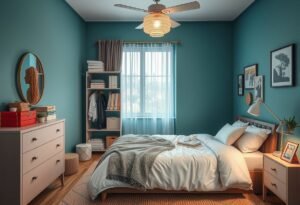Why Colors Matter
Colors have a profound influence on our emotions and state of mind. Research suggests that certain shades can stress us out, while others can soothe us. For instance, overly vibrant and aggressive colors like red or bright orange can create feelings of unease. Discovering which colors are the most stressful for you is key to creating a harmonious environment at home and in the garden.
Stressful Colors at Home
Many people aren’t aware that their wall color choices can contribute to increased stress. Bright yellow or overly intense purple can be tiring to the eyes and mind. Thus, considering softer hues that instead promote tranquility is essential for your sanctuary.
Color Psychology in the Garden
Gardens serve as places for relaxation and harmony with nature. The selection of flower and plant colors can greatly affect how we feel. Using stressful colors such as intense reds can lead to discomfort, while opting for greens, blues, and pastel shades can create a calming atmosphere.
Choosing the Right Colors
To achieve the desired effect in your home and garden, aiming for colors that encourage relaxation is crucial. Shades of green and blue are recommended as they symbolize peace and calm. Additionally, warm beige and pastel tones serve as excellent alternatives to more stressful colors.
Examples of Inspiring Colors
Drawing inspiration from nature can lead to wonderful discoveries. Colors like mint, sandy beige, or soft lavender can evoke positive feelings. Incorporating these into your design can reduce feelings of stress while enhancing your joy in your surroundings.
Colors and Lighting
Never underestimate the impact of lighting on color perception. Sometimes stressful colors can appear less intense under the right lighting. Testing various lighting options before making final color decisions for your spaces is a good practice.
Conclusion
Colors play a critical role in our lives and greatly influence our well-being. Avoid stressful colors when designing your home and garden, and instead, reach for hues that contribute to greater harmony and relaxation. Analyze your surroundings and discover what colors promote your well-being. Start today!
Disclaimer
This article is for informational purposes only and is not a substitute for professional advice on color psychology.

















